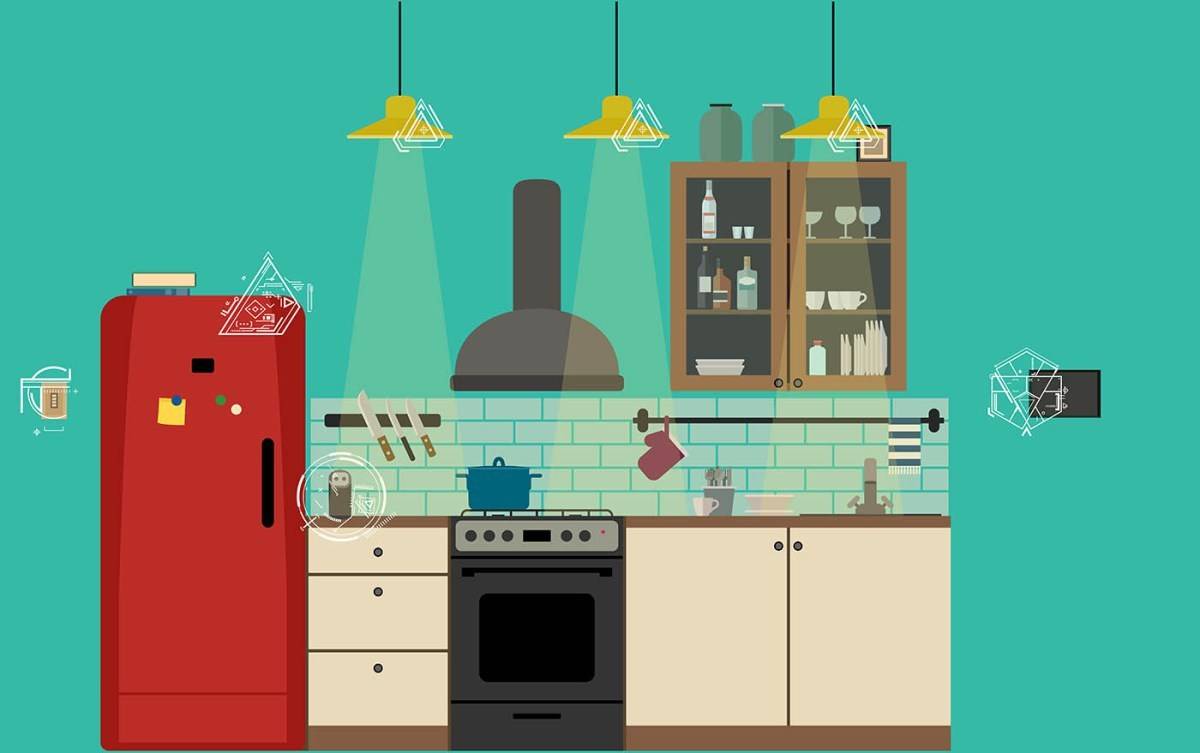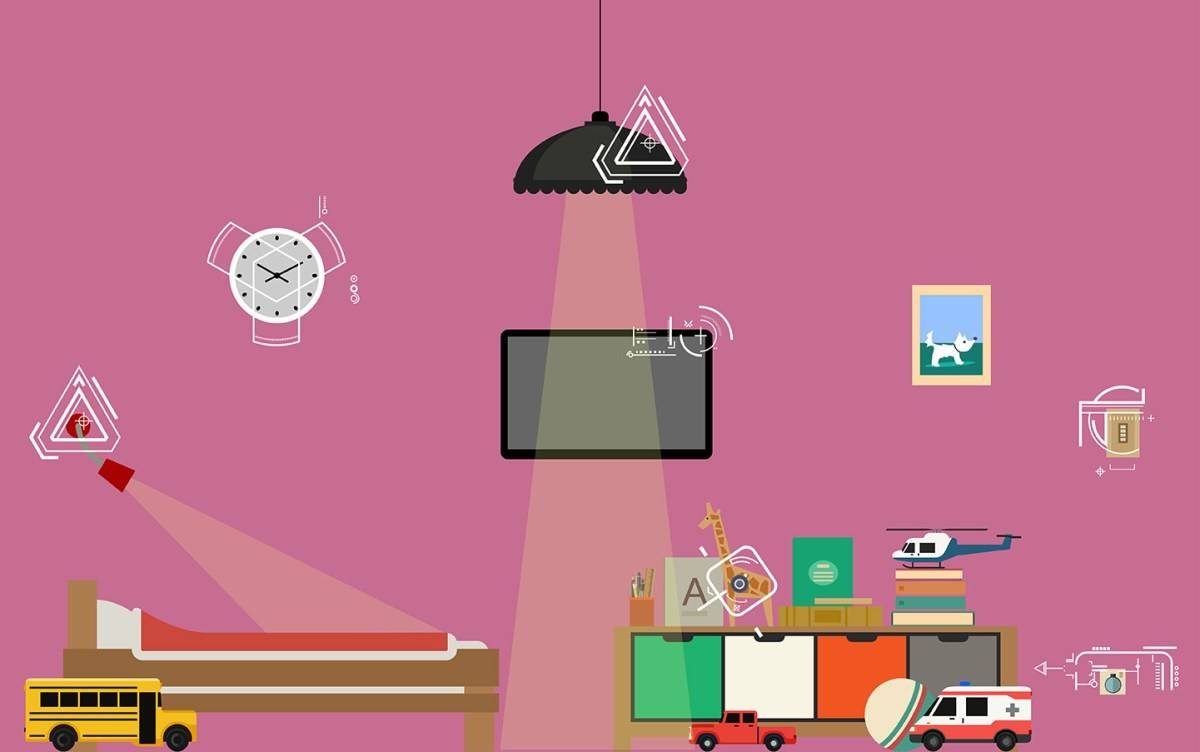The development of AI poses a threat to the long-term survival of humanity. At least, that’s the theory if you’re one of the 36% of respondents to a British Science Association/YouGov survey that agreed with this sentiment.
Yet, for all that the naysayers and prophets of doom are expecting the rise of the Terminator in the next few years (my bet is on the mid-2020s), the near future for artificial intelligence technology is actually looking pretty rosy. IBM alone has earned more than 500 patents in this area, while analyst Goldman Sachs believes that we are ‘on the cusp of a period of more rapid growth in its use and applications’.
Of all of the areas that might be affected by artificial intelligence, the home is almost a no brainer. When Mark Zuckerberg, as CEO of one of the most influential technology companies in the world, decided at the beginning of 2016 to create an AI, he decided to make one that could control his property for him. Built on existing work performed by Facebook’s AI research department, as of September 2016 it is now able to recognised Zuckerberg’s voice and face and controls his lights, gates, temperature and entry system for him (although it currently only responds to him, and not the rest of his family).
Zuckerberg – and by extension Facebook – is not alone in its ambition to create a more intelligent home. The custom installation sector has spearheaded this drive towards automation in the home with the aim of bringing residential technology in line with the desires of the consumer. Indeed, the smart home already has its own ‘brain’ in the form of a unified control system that manages each element of the home and acts as the interface between the user and the property.
Yet this type of automation tends to be reactive rather than anticipatory, responding to user prompts and sensor triggers rather than making informed contextual decisions about the way it manages the home. A lack of deep learning and machine intelligence built in into these systems means that they cannot learn new ways of acquiring information – only the functionality accounted for when the system was programmed can be delivered.
The connected home is as susceptible to hype as any other technology sector, and right now the connected speaker/home hub (think along the lines of the Amazon Echo or the upcoming Google Home) is the product de jour, lauded above all else as a portent of greater intelligence to come. Yet for all that such units are acting as Trojan horses in normalising the use of voice recognition control in the home, they still only demonstrate a limited amount of real intelligence, based largely on rules-led parameters.
Put simply, today’s home technology is clever and does the job it is intended for, but it’s not necessarily clever in the human sense of the word. Home automation in its present state is very good at meeting the majority of a user’s needs, but is still a little way off what the common man would envisage as the ideal, fully-automated smart home scenario.
How will it feel to live in an AI connected home?
A truly intelligent home would combine a number of sensory interfaces such as facial or voice recognition, context-based suggestion and responsive notifications to reduce the amount of input required on the part of the homeowner.
Ideally, this would all come together to create a control system that streamlines or simplifies users’ decision-making processes in a rapidly changing environment. A particularly extreme scenario would be the ability to stage an evacuation in the event that a small-scale fire started in, for example, the kitchen. Having sensed the blaze, the AI would alert each member of the house, requiring everyone in the family to acknowledge the alarm. It then intelligently guides each person to a safe meeting point based on their location, using only routes that it knows are currently safe for them to use. Adults are informed as to the status of the rest of the house’s occupants throughout this process, so they know that everyone is aware of the fire and is making their way out.
Right now, the information needed to plan for a situation such as this is staggering but, if an AI could plot such scenarios based on known user behaviour and the property’s layout, it should be able to run simulations using deep learning so that it can quickly and accurately provide assistance at such a time.
What form will a home AI take?
When it comes to AI modelling, there are two basic approaches that can be taken. A world model is where all of the system’s intelligence is supplied to it through the programming, supplying it with the information it needs to make informed decisions. The other approach – and the one favoured by current machine learning projects, lies in the construction of a framework that more closely resembles a human thought process, resulting in a which can teach itself about the environment around it and can create and update its own world models.
Since the smart home is a reasonably closed environment, yet is also highly individualised to the needs of the user, it is the perfect test bed for AI, either using one of the two models above or a hybrid of both of them. The usage data that is currently processed by home automation systems theoretically provides a decent bedrock upon which to build intelligent systems based on machine learning processes.
While it would be useful for an AI to access and share knowledge across a whole network of properties and external information so it can improve its behavioural data, the most important element will be its ability to understand and prioritise local activity when making a decision. Say a user wakes each day at 6am and leaves the house at 7am; you wouldn’t want a AI to decide that 7:28am was the optimum time to put the kettle on because the average time for homeowners to wake was 7:30am. Yet if a system could calculate the ideal time to wake a homeowner up based on sleeping patterns, weather data, and the likely traffic on their commute – as well as checking their calendar to see whether they are due to be at work that day – then it could combine a number of internal and external factors to make an informed choice each morning as to the best time to wake up the homeowner and brew them a cup of coffee.
“It isn’t a stretch to suggest that machine learning is likely to shake up how we approach a connected home,” states Wojtek Zajac, Technology Director at Andrew Lucas London. “We can foresee a number of platforms becoming available – either from established home technology manufacturers or from new entrants – that incorporate increasingly intelligent learning mechanisms. These may well be built on top of, or otherwise engage with, the type of home automation interface that we’re currently familiar with, as well as providing more intuitive control options such as speech and facial recognition.”
Stopgap intelligence
All of this is quite a long way from coming to fruition, but we can expect to see our homes becoming increasingly clever in the short term. One of the ways that this could happen is through the use of bots – essentially, semi-intelligent programs that can respond to users in conversation and perform a limited number of time-saving tasks. This is gaining traction in other areas; Facebook, for example, is heavily pushing its bot-building platform for its Messenger app with more than 11,000 such programs already created by developers.
In the home, there are a number of ways this can be applied within existing interfaces – for example, ordering a pizza or booking a taxi through an Amazon Echo device, for example. That said, if used collaboratively, these intelligent applications could be used to perform tasks far greater than the sum of their parts.
One interesting approach to this is interaction designer Kevin Gaunt’s take on co-operative bots, in a project shortlisted for a Core77 Design Award. In this project, he devised a system based on the Slack messaging app consisting of a combination of bots, centrally managed by a main control unit that interacted with the user via voice or push interactions. The homeowner would be able to give a command which would run through various smart bots that each perform a number of useful tasks, such as making an informed purchasing decision, checking on availability of funds and going through the buying process, completing the desired activity collaboratively without any need for further user input.
Although this is a speculative concept rather than a set-up that could be readily applied to the connected home, it does provide some intelligent insight as to how a framework through which chatbots and smartbots for a property might be established.
On a more practical note, certain companies are starting to look at exactly how bots might fit into a home environment and what sort of role they might play in the short term. Neos Insurance has stated that it plans to introduce a bot as part of its smart home insurance service to make user interaction a more seamless experience.
“Bots are a very important part of our product development path,” explains Daniel Knight, CPO at Neos Insurance. “The addition of this feature will streamline the way that the user engages with the smart technology in their home; the eventual idea is that this will eventually be replaced by a machine learning platform so that it can continually improve its performance based on its environment.”
Where do you draw the artificial line?
A fundamental question for artificial intelligence in the home will lie in how much power we are willing to grant an overarching control system. Should it be allowed to make its own decisions independent of human input, or should it simply make recommendations for the user to review and approve? Would the latter not negate its usefulness as an automated system?
Recent developments in AI have highlighted the ability for such systems to spot patterns that a human almost certainly would not have and act upon them to achieve a positive result: it is, conversely, exactly what Alpha Go did in Move 37 of its second match of its Go board game series against Lee Sedol, one of the world’s best players. It was a completely unconventional move, which the computer determined a human would choose only one in ten thousand playthroughs. This decision completely bamboozled Sedol and let Alpha Go build a strong secondary position that allowed it to win the game convincingly.
It was a perfect example of the benefits of pattern detection mixed in with insight into standard human behaviour, yet it isn’t necessarily foolproof. Indeed, in Move 78 of the fourth match, Sedol placed a stone in a similarly unlikely move that turned the game in his favour, thus showing that even a machine built on both a deep neural network and significant reinforcement learning cannot always predict human behaviour.
An AI making an error is all well and good in a board game environment, but in the home the stakes are significantly higher. Even a one in ten thousand chance of making a wrong decision could be a liability when it comes to home automation, in which case a failsafe or trip switch will need to be built in as a counterbalance. Additionally, the fact that the home is such a personal space means that residents will absolutely need to feel in control of their space. Because of this, offering the user the opportunity to tweak and override any AI automation will go a long way towards creating a service that is more amenable for homeowners.
The other pillar upon which an AI for the home will have to be built is whether or not it is ‘friendly’ – a term coined by researcher Eliezer Yudkowsky in his excellent paper on ‘Artificial Intelligence as a Positive and Negative Factor in Global Risk’. In this, he discusses the substantial need for any evolving artificial intelligence platform to guard against unintended or malicious behaviour as a matter of course. As he points out:
“Friendly AI is not a module you can instantly invent at the exact moment when it is first needed, and then bolt on to an existing, polished design which is otherwise completely unchanged.”
Expanding this idea further is a recent Google Brain paper titled ‘Concrete Problems in AI Safety’ (and written in tandem with researchers OpenAI, UC Berkerley and Stanford University). This research again focuses on a residential situation and suggests five practical challenges involved in creating an AI-enabled cleaning robot. These involve ensuring that the robot will not cause damage in order to work faster, will not find loopholes to activate its reward system, will offer a level of human oversight and control, will adapt to different locations (where rules might change) and will only explore more efficient ways of performing its role in a safe, secure manner.
When you consider that all of these are simply the result of a relatively limited scenario (cleaning a home), then this begins to shed some light on the huge task facing companies and institutes looking to bring artificial intelligence into the home. Yet, if the current enthusiasm from venture capitalists and investors into AI projects is sustained, then there is a strong chance that we will see substantial gains over the coming months and years. We might not have an all-singing, all-dancing HAL 9000 for the home anytime soon – but it seems inevitable that we will start seeing a growth in machine learning ideas being employed with the goal of developing increasingly intelligent home environments.


